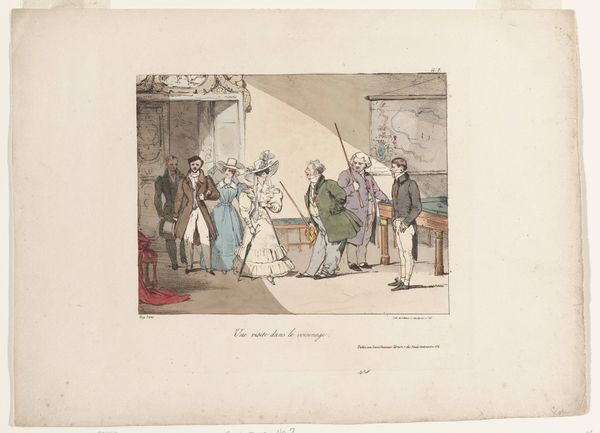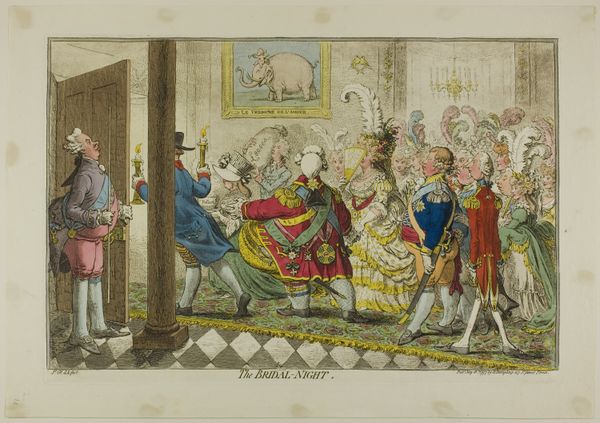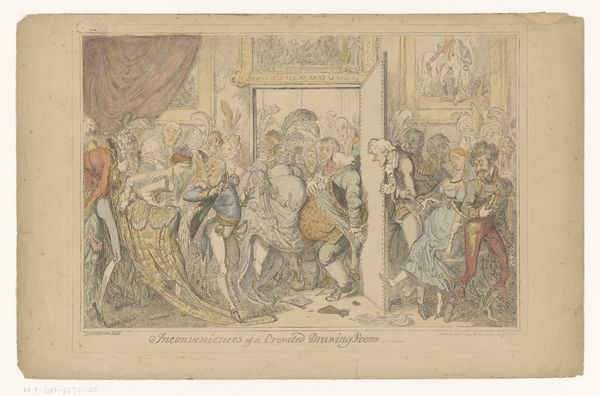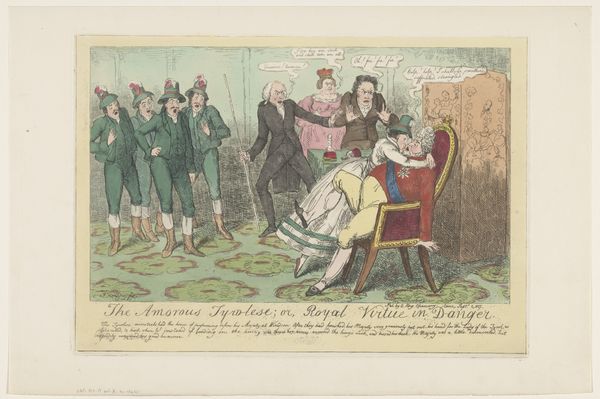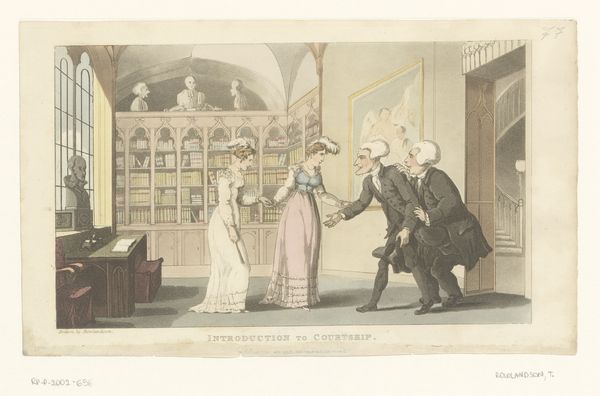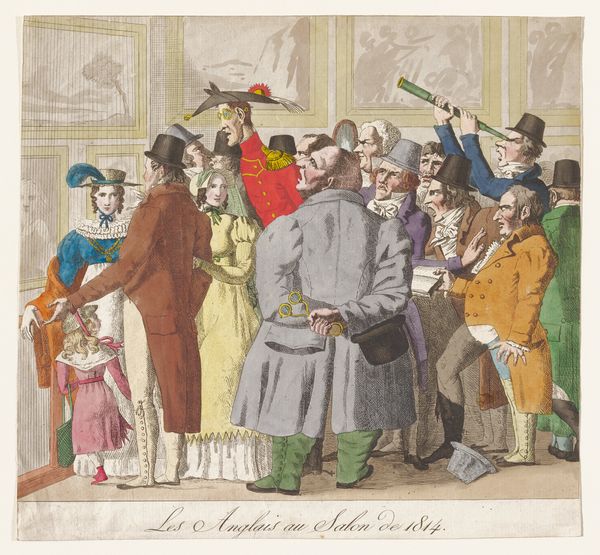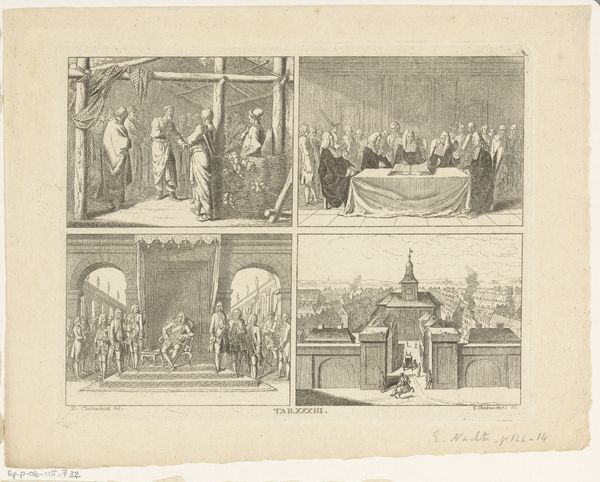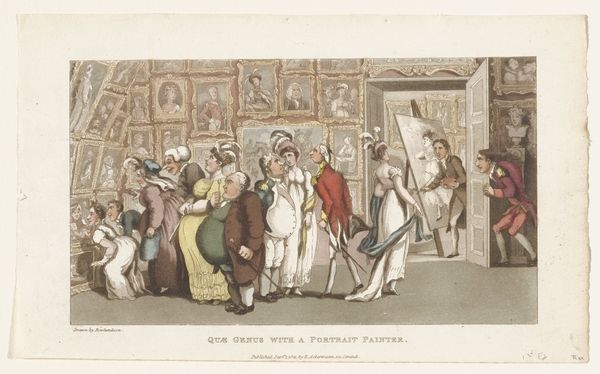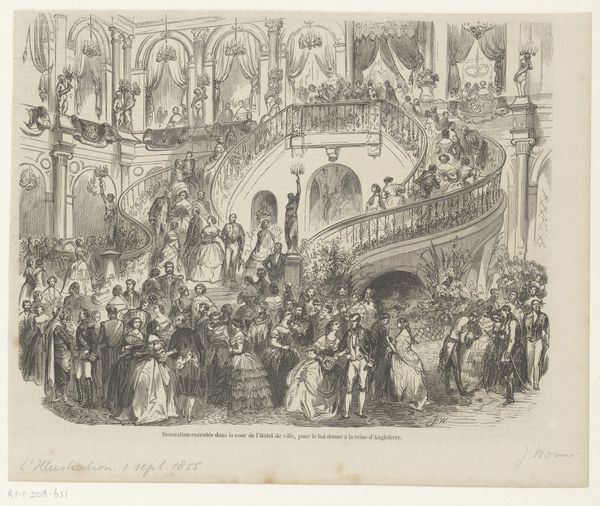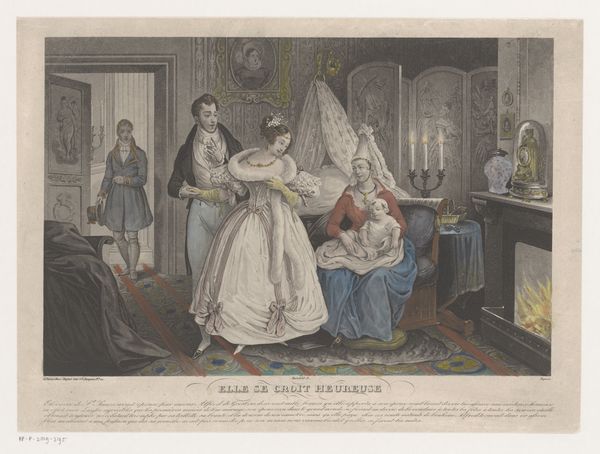
Dames en heren aanschouwen schilderijen bij een tentoonstelling in Wenen 1829 - 1848
0:00
0:00
drawing, lithograph, print, watercolor
#
portrait
#
drawing
#
narrative-art
#
lithograph
# print
#
watercolor
#
intimism
#
group-portraits
#
romanticism
#
cityscape
#
watercolour illustration
#
genre-painting
#
academic-art
#
watercolor
Dimensions: height 212 mm, width 260 mm
Copyright: Rijks Museum: Open Domain
Curator: Here we have Andreas Geiger's "Dames en heren aanschouwen schilderijen bij een tentoonstelling in Wenen," created sometime between 1829 and 1848. The medium appears to be a combination of watercolor, lithograph, and possibly some drawing techniques on paper. It is currently an image only. Editor: It's teeming with activity and curiosity. There's a certain frenetic energy communicated by the multitude of figures, each engaged in their own contemplation of the art. The print hints at an almost factory-like reproduction due to its line work; one senses both artistry and commerce are deeply entwined. Curator: Indeed. Note how Geiger uses linear perspective and placement to emphasize the hierarchical relationship between the viewers and the art. The formal composition leads your eye across the room. Focus on the symmetry and frame of the pieces exhibited—this structure emphasizes an elevated viewing experience. Semiotically, each artwork shown within contributes to the construction of the scene as a signifier of culture. Editor: But the very act of observing these paintings underscores questions of class and consumption, wouldn't you agree? It brings up the material aspects. Who is allowed to see, to appreciate, to buy? Look at the clothes, at the slight distinctions which must be a marker of social position, all shaped by production methods. Are the artworks rendered as valuable, inaccessible objects? Curator: It would seem Geiger is indeed creating a narrative about art and spectatorship, framed within the stylistic conventions of Romanticism. I'd suggest it adheres to genre painting too, if only loosely. Notice how Geiger contrasts moments of private contemplation with communal spectacle, to further comment on society and individuality through artistic interpretation. Editor: I find it especially revealing to think of the lithographic process here. How does mass-produced printmaking democratize image production, even as the subject remains a bourgeois display? It also prompts us to ponder accessibility versus exclusivity as the image makes the rounds. It certainly shows how industrial methods influenced art. Curator: Considering Geiger’s work through these intertwined contexts grants greater insight into the social dialogues that define the piece, even down to its basic components. Editor: Exactly. This is one piece where material means deeply inflect our analysis of both production and experience, creating a rich portrait of a certain slice of Viennese society and artistic sensibilities.
Comments
No comments
Be the first to comment and join the conversation on the ultimate creative platform.
